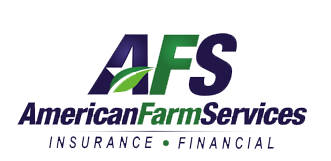 Farm Fire Checklist…
Farm Fire Checklist…
In 2007,direct property loss in the United States due to fire was estimated at $14.6 billion.
(US Fire Administration/FEMA)
Fires in barns and other farm buildings can be devastating in terms of loss of property, livestock and sometimes lives. This checklist is designed to help you identify fire dangers today in order to prevent possible fire losses tomorrow.
1) HOUSEKEEPING
(A) Debris in a building can be both the fuel and cause of a fire, so keeping the interior clean is essential. Do you see any piles of debris, unused parts/equipment, pesticides or other chemicals? Is there a buildup of cobwebs and dust in the ceiling?
Yes_____ No_____
Action: If you did locate debris or other unused items, remove them. Please follow all local and state regulations concerning the disposal of pesticides, chemicals and other items. Cobwebs and dust can help spread a fire quickly throughout the barn, so minimizing their buildup is essential.
B) Debris, brush and piles of wood chips, manure or other organic material located outside a building can be equally as dangerous. Is there a need to mow the area around the building; are there any piles of organic material located next to the building?
Yes_____ No_____
Action: If you did locate debris or other unused items, remove them from the property. Please follow all local and state regulations concerning the disposal of all items. If piles of organic material are present, they should be moved at least 50 feet away from the barn.
2) SMOKING
A discarded cigarette either inside or outside of the barn can quickly spread to engulf the entire building. Is smoking currently allowed inside or outside the building, and are “No Smoking” signs posted?
Yes_____ No_____
Action: Ban all smoking in and around the building by family members, employees and members of the public. Place “No Smoking” signs at the entrance to the building and inside.
3) ELECTRICAL
Electrical failures are the most cited cause of barn and farm building fires. Do you see any frayed wiring; do electrical outlets, receptacles and panel boxes have rust and corrosion? Are lights lacking caging or other covers? Are cobwebs visible in the ceiling? Is dust buildup visible on rafters?
Yes_____ No_____
Action: If you did notice frayed wiring, corroding receptacles and exposed lighting, it is highly recommended that you seek the services of a qualified licensed electrician to make repairs. In fact, having a licensed electrician perform a periodic electrical inspection of all buildings is a good practice.
4) REFUELING AND STORAGE OF VEHICLES
Two dangerous fire hazards relate to vehicles and equipment. The first is refueling conducted inside the barn or building. The second is storing equipment or vehicles inside the building while they are still hot from use. Do you currently do either or both of these practices?
Yes_____ No_____
Action: If you refuel inside the building, discontinue this
practice – the convenience is not worth the risk. If you currently store your equipment and vehicles immediately after use, instead let them cool down, then restart and move them into the building.
5) HAY
The moisture in hay creates a chemical/microbial reaction, and the higher the moisture level when baled the higher the threat of spontaneous combustion. Do you have hay stored in your barn or farm building?
Yes_____ No_____
Action: Mow and bale hay at optimum low moisture levels and follow all proper baling, storing and temperature monitoring practices. Proper building ventilation and space between the bales themselves to allow for the escape of moisture is also important. If you are unsure about hay storage practices, contact your local agricultural extension.
